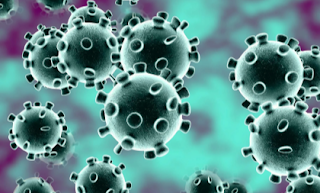As the coronavirus (also known as COVID-19) continues to spread fear across the planet, health officials from all over the world are working to contain the outbreak and people are looking to keep the virus from infecting themselves.
While the outbreak is most widespread across China, with thousands of deaths already reported, it is spread to countries across the globe and the United States is included.
The Center for Disease Control and Prevention and World Health Organization have been following the virus closely. They both have resource banks that help you track the outbreak and best protect yourself against it.
Symptoms
According to CDC, symptoms of the virus may appear between two and 14 days of exposure.
Prevention
The virus is mainly spread from person-to-person. This can be between people who are in close contact with each other, or through an infected person coughing or sneezing. It is also possible, according to the CDC, that a person could be infected by touching a surface that has the virus on it and then touching their mouth, nose or eyes.
Some things you can do to prevent getting the virus:
Do I need a face mask?
CDC does not recommend wearing a face mask unless you already show symptoms of the illness. Face masks are crucial for health workers and other care providers, and supplies could become depleted.
If you need a mask, WHO has some tips on how to correctly use one.
U.S. Surgeon General Dr. Jerome Adams urged in a tweet Saturday for consumers to stop buying face masks.
"Seriously people- STOP BUYING MASKS!” Adams tweeted. “They are NOT effective in preventing general public from catching #Coronavirus, but if healthcare providers can’t get them to care for sick patients, it puts them and our communities at risk!"
While the outbreak is most widespread across China, with thousands of deaths already reported, it is spread to countries across the globe and the United States is included.
The Center for Disease Control and Prevention and World Health Organization have been following the virus closely. They both have resource banks that help you track the outbreak and best protect yourself against it.
Symptoms
According to CDC, symptoms of the virus may appear between two and 14 days of exposure.
- Fever
- Cough
- Shortness of breath
Prevention
The virus is mainly spread from person-to-person. This can be between people who are in close contact with each other, or through an infected person coughing or sneezing. It is also possible, according to the CDC, that a person could be infected by touching a surface that has the virus on it and then touching their mouth, nose or eyes.
Some things you can do to prevent getting the virus:
- Avoid close contact with people who are sick.
- Avoid touching your eyes, nose, and mouth.
- Stay home when you are sick.
- Cover your cough or sneeze with a tissue, then throw the tissue in the trash.
- Clean and disinfect frequently touched objects and surfaces using a regular household cleaning spray or wipe.
- Wash your hands often with soap and water for at least 20 seconds, especially after going to the bathroom; before eating; and after blowing your nose, coughing, or sneezing.
Do I need a face mask?
CDC does not recommend wearing a face mask unless you already show symptoms of the illness. Face masks are crucial for health workers and other care providers, and supplies could become depleted.
If you need a mask, WHO has some tips on how to correctly use one.
U.S. Surgeon General Dr. Jerome Adams urged in a tweet Saturday for consumers to stop buying face masks.
"Seriously people- STOP BUYING MASKS!” Adams tweeted. “They are NOT effective in preventing general public from catching #Coronavirus, but if healthcare providers can’t get them to care for sick patients, it puts them and our communities at risk!"

